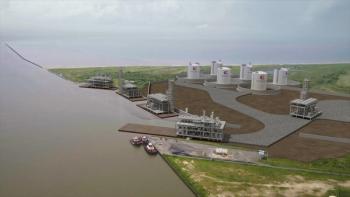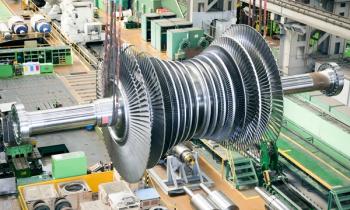
Canada Invests $2.5M in Domestic Carbon-Management Technology
Key Takeaways
- Canada is funding TerraFixing's DAC project to advance CCUS technologies, aiming for cost-effective CO2 capture in colder climates.
- TerraFixing's structured zeolite packing enhances CO2 extraction, targeting a scalable model to reduce costs below $100 per ton.
The Energy Innovation Program is supporting TerraFixing in developing direct air capture technology with up-scaled CO2-capture beds, applicable to colder climates.
In light of interrupted trade relationships and international irresolution, Canada is actively funding domestic carbon capture, utilization, and storage (CCUS) technologies to continue greenhouse gas mitigation efforts; specifically,
TerraFixing’s structured zeolite packing leverages a porous mineral that extracts CO2 from the atmosphere, reducing pressure drop and enabling mass CO2 transport. The primary goal is to pack a 1,000-tons-per-year model into a shipping container, lowering costs below $100 per ton of CO2 at an increased scale.
"EIP's CCUS Capture contribution has been catalytic for TerraFixing,” said Dr. Vida Gabriel, Co-Founder and CEO/COO, TerraFixing. “With the funding, we've built a state-of-the-art lab, doubled our team, and developed a new manufacturing IP that we're now moving from benchtop to a pilot production line in a warehouse right here in Ottawa. The program's support is helping us keep technology and IP in Canada, create supply chain independence from the United States, and stimulate the creation of hundreds of high-skilled jobs on the path of making Canada a leader in CCUS."
The EIP’s TerraFixing funding comes under the Carbon Capture, Utilization, and Storage Research, Development, and Demonstration (RD&D) program. RD&D promotes next-generation CCS technologies that may reduce costs via three avenues: capture, storage and transportation, and utilization.
- Capture: Cuts cost and improves the performance of capture technologies across various emission sources.
- Storage and Transportation: Classifies and develops safety-minded, permanent underground CO2 sequestration and technologies. This avenue supports efficient CO2 transportation and domestic storage opportunities.
- Utilization: RD&D promotes CO2 utilization technologies that lower costs, energy usage, and carbon intensity.
Carbon-Capture Technologies
At the 2024 Turbomachinery & Pump Symposia, folks from Siemens Energy, including Lukas Biyikli, R&D Portfolio Manager of Integrally Geared Compressors, and Mike Welch, Industry Marketing Manager, presented on the
According to Welch, carbon capture is a difficult process when using gas turbines: “The only certain thing about CO2 capture is that you’ll need a lot of space and it’ll cost you a lot of money—it’s not a cheap solution. Most of the processes are designed to operate at low ambient temperatures, so you become limited to the available technologies when operating with a gas turbine. There are only a few [technologies] that don’t require cooling of the gas turbine exhaust and most of the emerging technologies can’t support large-scale turbines.”
Modular Amine Towers: Often applied to smaller emitters that generate less than 1,000 tons of CO2 per day. With a smaller footprint, towers have shorter construction times and can be used at space-constrained sites, such as offshore platforms.
Rotating Packed Beds: Features enhanced CO2 adsorption through centrifugal force, but generally lower capture rates at approximately 100 tons per day.
Potassium Carbonate: Proven for gas processing and scalable to large CO2 capture volumes. The energy demand is similar to amine towers, but these systems can use hot water for solvent desorption. On the downside, potassium carbonate operates with low flue gas inlet temperatures.
Hot Potassium Carbonate: Unlike typical potassium carbonate, it operates at high flue gas temperatures in a pressurized process. It can generate its own electricity and gas turbine supplementary firing can increase CO2 concentration.
Membranes: These are also proven for gas processing but struggle when applied to gas turbines, as multiple modules are required to achieve the desired capture rate and purity. Membrane contactor modules are a hybrid solution combined with amine solvents.
Cryogenics: Freezes CO2 out of the flue gas stream.
Electrochemical: Electroswing adsorption can be used on gas streams with any CO2 concentration and, according to electrochemical operators, can selectively capture NOx and SOx.
Newsletter
Power your knowledge with the latest in turbine technology, engineering advances, and energy solutions—subscribe to Turbomachinery International today.




